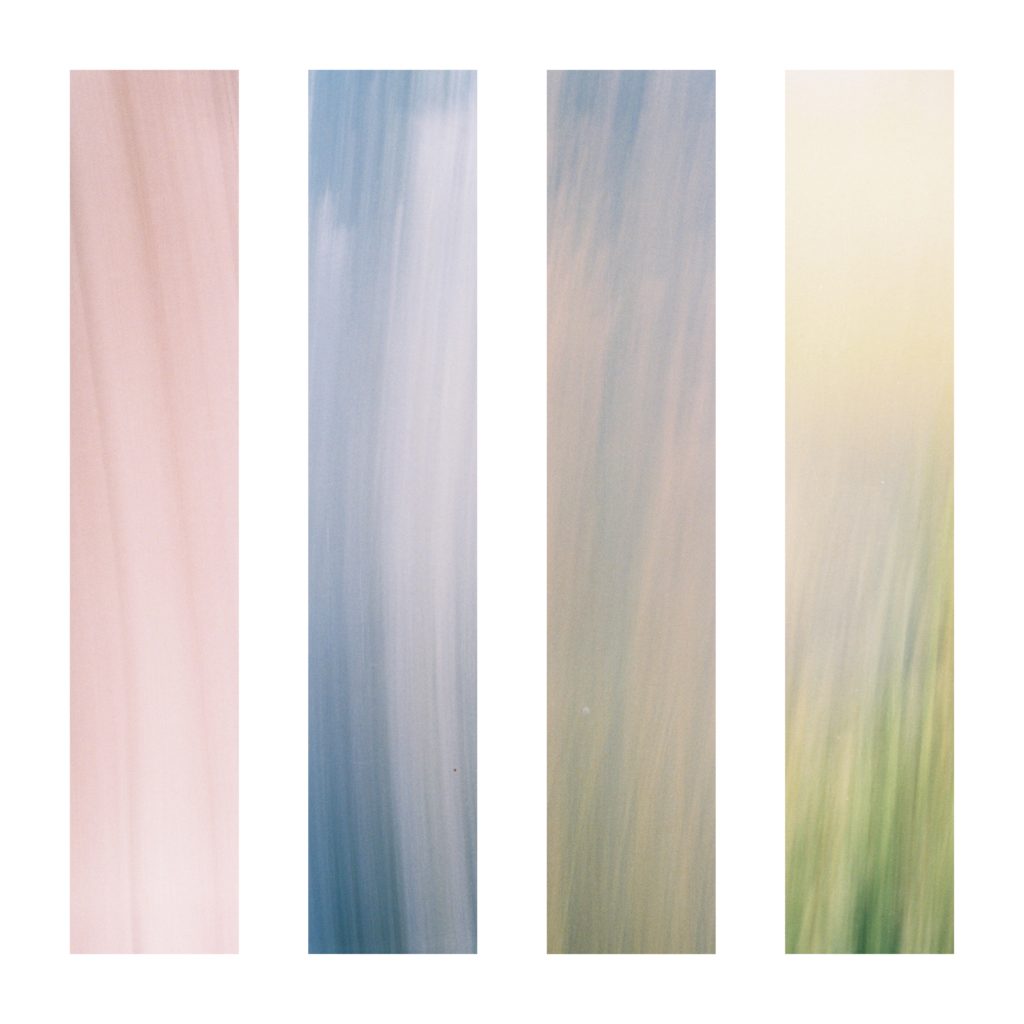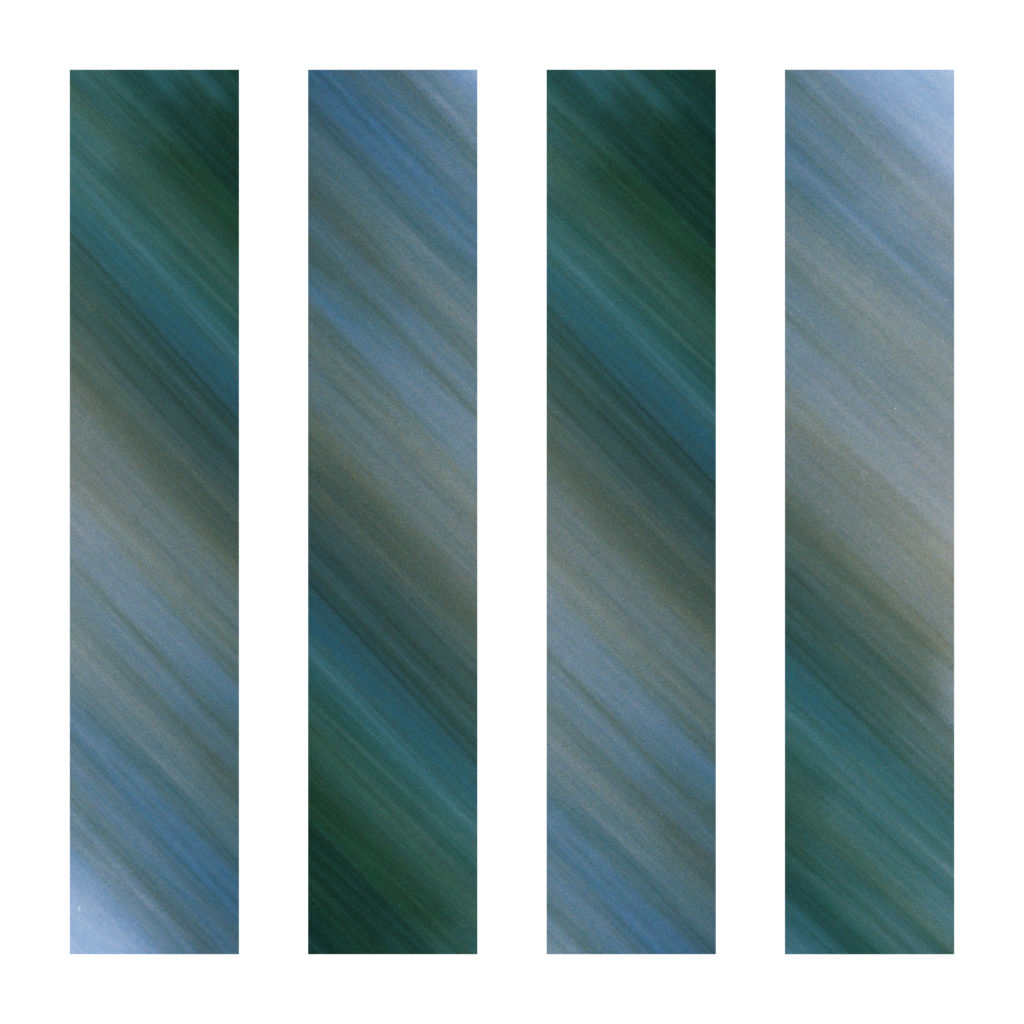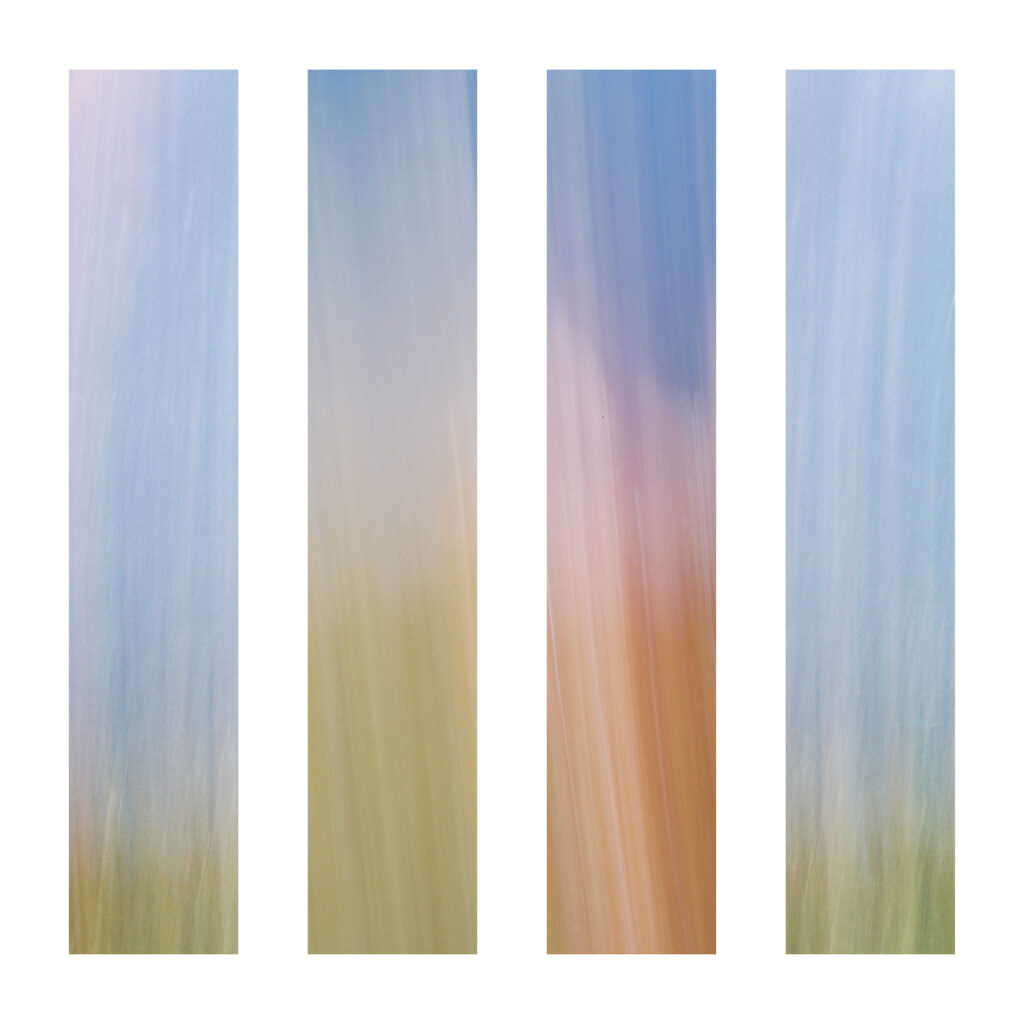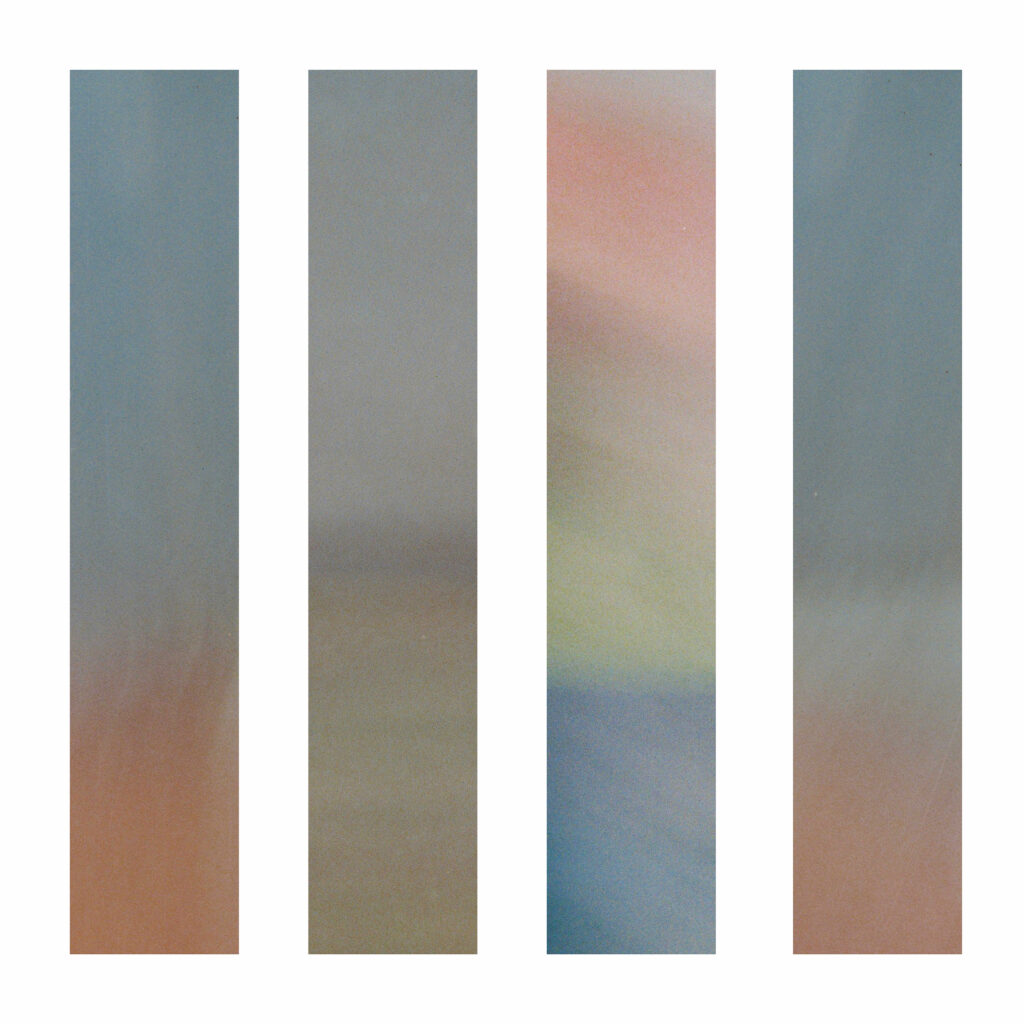test strips
2019-2020

A commission for the Canal & River Trust Waterfront Journal.
—
1. The Northern Reaches, June 2019
Driving along the M6 motorway between Kendal and Lancaster, you will encounter two road signs close to each other: Welcome to Cumbria (or Lancashire, depending on which way you’re travelling); and Lancaster Canal. It’s at this point that the motorway slices through the course of the Lancaster Canal, isolating the largely-unnavigable and highly-biodiverse ‘Northern Reaches’.
Stretching for fourteen miles from the marina at Tewitfield, near Carnforth in Lancashire to Kendal in Cumbria, the Northern Reaches – originally constructed between 1797 and 1819 – was closed to navigation in the 1950s and 60s after the construction of the M6. More than 50 years later, the Northern Reaches are unlike any other stretch of canal I have visited. Aquatic plants have flourished in the decades since its use as a waterway, giving the impression of a fen or wetland in places, and there are numerous bird species present in the reeds and hedgerows fringing the water’s edge.
I created this sound portrait and artwork from a walk between the Tewitfield Marina and the open fields near Burton in Kendal. Walking from mid-afternoon to dusk on a sunny early summer Sunday, I documented this three mile route using a set of microphones and 120 and 35mm film cameras. Ambient soundscapes were recorded simultaneously with a stereo microphone and binaural microphones. Binaural microphones are clever: they look like cheap earbud headphones, and are worn in the ears, recording a 360 degree soundscape around your head. Listening back on headphones, they offer a real sense of space: swans flying by and splashing through the stereo field; West Coast mainline trains rushing past your ears.
Another special kind of microphone – the hydrophone – allows you to eavesdrop on underwater worlds. Hydrophones are shaped like round fishing weights, attached to long cords. They can be variously placed, dropped or chucked into the water column, and, when settled in the bed sediment, often reveal busy and industrious underwater soundscapes. As transport routes intersect and rumble above the surface, a whole host of underwater insects create sounds – variously rhythmic, melodic and droning.
These sounds are largely produced through the process of stridulation, where aquatic insects rub body parts together to create sound, much like grasshoppers or crickets do. Whilst many of the insect stridulations we hear can’t yet be identified, a few can. The Lesser Water Beetle call, for example, consists of a series of clicks followed by a hum like the unfurling of a coiled spring. Hydrophones give us a sonic window onto a world otherwise inaccessible to the human senses: patterns and processes of life going on below the surface.
The sound portrait follows my walk from the busy Tewitfield Marina, where the noise of the motorway and generator engines is inescapable, up a series of disused locks, each with a mini-waterfall, and ferns and rowan saplings growing vertically through cracks in the brickwork. We cross over the motorway, and gradually lose the background rumble of the cars, opening out onto the fields in the evening light, with only passing trains and overhead planes punctuating the chatter of hedgerow birds and ebbing curlew calls.
The sound portrait dips above and below water: each hydrophone recording differing depending on the aquatic life present and the speed of the water itself. Rumbles and hisses of white noise, however produced – the motorway hum, wind in the trees, rushing water – characterise the Northern Reaches soundscape. Where the water is still, hydrophones pick up resonances of this ambient drone, as it resonates through the water column and its buzz of underwater life.
The artwork was created from a series of long exposure film photographs taken along the same stretch of canal. It abstracts colour palettes along the canal – reed beds, duckweed foamed with road wash, bridge brickwork in the evening sunlight – and lays them out like a biologist’s ‘test strips’ used to determine water quality. Together, the sound and visual works form a document of the rhythms, patterns and textures of the lower Northern Reaches of the Lancaster Canal in early summer.
This is a modal window.
—
Field notes on hydrophone locations
0.00 – 0.30 – Tewitfield Locks (disused). Water flowing gently; green algae and white foam road wash on surface.
0.46 – 1.18 – Tewitfield Locks (disused). Still water immediately above lock overflow; water seems to pick up the hum of the motorway traffic.
1.30 – 2.12 – Canal terminus at the M6; open channel.
2.30 – 3.20 – Canal terminus above the M6; underneath metal maintenence structure; sounds like the metal is resonating above-surface noise into the underwater soundscape.
3.32 – 4.30 – In reedbed in Northern Reaches above the M6.
—
2. The Leeds and Liverpool Canal, Burnley to Barrowford, September 2019
This sound walk begins at the Weaver’s Wharf on the Leeds and Liverpool canal in Burnley, Lancashire. Formerly the centre of the town’s cotton industry, this is a stretch of canal in transition, where the deep blue hoardings of waterside construction sites mirror the silver-green sheen of the water. Sound echoes around the now-empty wharf: ducks puttering through blankets of neon duckweed; sirens rising from the surrounding town; children’s footsteps on a rust-red footbridge; pigeons fluttering from abandoned factory roofs.
Beneath the water’s surface there is an equally lively soundscape. Lowering a pair of underwater microphones – or hydrophones – through the duckweed (past the shopping trolleys and tideline of plastic) reveals a new sound world. Insects flit between submerged plant stems, many making sounds through rubbing their legs together rapidly in a process called stridulation. These soundings can be both percussive and melodic: a range of scrapes, burrs, whirrs and thuds.
It’s not only aquatic insects that are detected by hydrophones: we can also hear the sound of oxygenating plants like pondweed photosynthesising. Photosynthesis is the process by which oxygenating plants take in carbon dioxide from the water column and release oxygen. This vital ecological process – which allows aquatic food webs to flourish – releases endless streams of tiny air bubbles. When these bubbles hit the hydrophones, they click and pop. Listening underwater thus allows us to tune in to otherwise off-limits ecological processes in seemingly featureless patches of water, which become alive and rhythmic. The patterns of these rhythms are composed by sunlight, and shift with the time of day and the movement of shadows across the water’s surface.
Hydrophones also allow us to hear the ways in which human-generated noises permeate underwater worlds. The rumble of traffic, the peep of car horns and the drone of industrial extractor fans seep through this submerged sound world, whilst the engine of a passing canal boat or the opening of a lock gate almost deafening.
The sound walk follows a route north-east from the Weaver’s Wharf through Burnley and Nelson and out onto the open countryside at Barrowford. The canal is raised high up over Burnley by an aqueduct (known as the ‘culvert’) originally constructed in 1797. Walking its course, you can look north over the terraces and chimney pots to Pendle Hill, and south towards the spine of the Pennines over Turf Moor football ground and the Singing Ringing Tree sound sculpture. This is where the long-exposure photographs used to create the accompanying artwork were taken, as stone, sky, water and vegetation blur. Here, I am reminded that the open moortop is not far from the streets below, and that the canal is another line of transport and exchange between the town and the country.
The walk took place on a still and sunny Sunday in September: the towpath busy with runners, cyclists and children playing. The sound piece dips above and below water. A couple fish under a willow tree on the culvert, watched by a ginger tabby cat. A man casts tiny silver lures in between reed beds for striped jack pike – the water shattering like glass when a fish strikes. The smell of balsam and buddleia is sickly sweet in the air; white seed-head spindles on bank-side rosebay willowherb catch in the breeze. A kingfisher streaks past as we walk above Thompson Park, with the River Brun flowing below. As we move out into the countryside, the hum of the town and M65 recedes, and we walk past a series of locks at Barrowford where crows croak in swaying oaks, and flocks of Canada geese rest on bright fields. We keep walking, out towards the hills.
This is a modal window.
—
Field notes on hydrophone locations
0.22 – 0.59 – The Culvert, Burnley. Pondweed photosynthesising.
1.05 – 2.05 – Barden Marina, Burnley. Insects and passing canal boat.
2.10 – 3.02 – Thompson Park, Burnley. Pondweed photosynthesising and insects stridulating.
3.12 – 4.12 – Brierfield. Pondweed photosynthesising.
4.18 – 5.00 – Barrowford Locks. Below a lock outflow.
—
3. The Pontcysyllte Aqueduct, November 2019
The Pontcysyllte Aqueduct in North Wales carries the Llangollen Canal high above the River Dee valley.
Designed by Thomas Telford and completed in 1805, the ‘Ponty’ spans over 300 metres across the wooded valley, its arches rising 38 metres through the treetops. The longest aqueduct in Great Britain, and the highest canal aqueduct in the world, the Pontcysyllte is both a Grade I listed building and a World Heritage Site.
Our sound walk begins at the Trevor Basin close to the northern edge of the aqueduct, where early morning walkers crunch through frozen leaves and icy puddles as a thin mist lifts into a clear blue November sky. Approaching the aqueduct, the roar of the river wells up from below, its spate a memory of storms from the week before. The canal flows steadily southward across the aqueduct’s cast iron structure, a lightbox for suspended autumn leaves in washed out yellows and oranges: oak, ash, poplar, sweet chestnut.
We follow a path down the steep valley side below the aqueduct. The trace of climbing ivy removed from the masonry pillars resembles a watershed map or root system – capillaries and tributaries moving water through the valley. Contact microphones slipped between the cracks in the stonework record the movement of the melting water moving through the aqueduct: percussive clicks and abstracted rumbles. Hydrophones record the character of moving water on the valley floor: the Dee a stream of white noise; culverted streams sounding tuned and melodic in comparison.
Back up on the aqueduct we look north-west towards Snowdonia, with the hills white with the first snows of winter, and east to the Cefn Mawr Viaduct, which carries the train line over the valley. The canal curves through a tunnel of trees south-east from the aqueduct, past a series of disused lime kilns where canal boats now moor. The line where the water laps the block work stone canal edge catches the low sun like a gleaming silver thread.
As the day progresses, the towpath becomes gradually busier with walkers, families and cyclists. The Dee valley below is a patchwork of green and white: a heat map of the sun’s arc across the morning. Robins and blue tits flit through the hedgerows, picking at hawthorn berries and rose hips. Wild clematis cascades onto the towpath like a waterfall of candyfloss. Crows bicker in neighbouring fields, dotted on telegraph wires like notes on an unruly stave.
In the dulling afternoon light we reach the Whitehouses Tunnel. Completed in 1802, and spanning 175 metres in length, it was one of the first canal tunnels in Britain constructed with a towpath. Walking through its narrow entrance, the birdsong of the surrounding landscape is quickly muted and replaced by the echoing drips of water falling from its brickwork arch. It is almost entirely dark in the middle of the tunnel, with only the half-moon patches of light at either end visible. Torchlight catches mini stalactites hanging from the ceiling and the grey, depthless flow of the water.
A horn sounds outside as a barge prepares to navigate the tunnel. As it approaches, the roar of its engine and the churning water echoes into a long, rolling drone: the tunnel acting like a giant pipe organ tuned by the movement of air and water. In this tight space, the deep sound resonates through your body. As the barge leaves, the drone fades away, and the dripping water and faint birdsong slowly return.
This is a modal window.
–
Field notes on recording locations
0.00 – 1.00 – Around the Trevor Basin.
1.00 – 1.30 – On the Pontcysyllte Aqueduct.
1.30 – 2.05 – Water moving through the aqueduct stone and metalwork (recorded using contact microphones).
2.05 – 2.30 – River Dee and tributaries on the valley floor (recorded using hydrophones).
2.30 – 3.30 – Along the Llangollen Canal.
3.30 – end – In the Whitehouses Tunnel.
–
4. Glasson Dock, March 2020
Finally, for what seems like the first time in weeks, it stopped raining. Driving through salt marshes on the way to Glasson Dock, the landscape is a wash of glistening primary colours, the wet fields rippling with light. Located on the southern shore of the Lune Estuary on the Lancashire coast, the dock was once the largest port in North West England and a key point on British Empire trade routes stretching out across the Atlantic.
Opened in 1787, Glasson Dock is no longer home to the tall ocean-going sailing ships of centuries past, but it remains a working port. Arriving in bright, clear sunlight, the sound of the moored boats whips across the dock’s inner basin on a westerly wind in off the Irish Sea: sails flapping, bells ringing, taut ropes whistling. Waves race to the shore; a pike fisherman struggles to cast his lure any distance at all.
Today, the only constant is the wind: it is nearly impossible to record anything else, the task instead is to tune in to how it animates the landscape. The birds bobbing on the basin surface – coot, moorhen, tufted duck, drake goldeneye – are seen rather than heard. Colour washes over water, land and buildings as the moving clouds frame the searchlight sun.
I look for shelter, wandering between the harbour warehouses, and finding a back eddy of quiet tucked away from the main wind currents. Sea kale grows out of a pile of rubble; small stones tumble down its slope and scatter away like a riverbed over the tarmac road. A song thrush sings boldly through the clatter of the dry-dock sails.
After a few minutes walking along the coast from the harbour, I arrive at Bodie Hill where the views reach out over Lancashire, Cumbria and the Isle of Man. Over the grey storm waters of the Lune, I can see the low Georgian buildings of the Sunderland Point peninsula, which itself hosted a busy port until the construction of Glasson Dock. The Lakeland hills line the northern horizon over the Heysham Power Station. To the south, the Portland stone dome of the Ashton Memorial in Lancaster is framed by the Bowland fells.
Flocks of goldfinches and linnets billow up from the teasels on the rough ground above the tideline. A blackbird sings, tucked into a palisade of blackthorn. A mini murmuration of starlings ebbs over the tidal flats. A flock of oystercatchers flicker in black and white, their peeping calls sounding out the bay through the white noise of wind and tide.
The tideline is a spongy stratum of wood, vegetation and assorted objects: plastic toys, an oil drum, mermaid’s purses, a fire extinguisher, Chinese crockery, a black laptop bag, a shell-shape of polystyrene, a ball of empty whelk eggs. Under the shivering skin of a tidal pool, insects click and pop. The barbed wire fence sings in the wind, rattling over the lichen-flecked shell of an abandoned boat.
We’re losing the light already; snow-light clouds gather overhead. I walk back to the basin and follow a path to the mouth of the Lancaster Canal. The first drops of rain turn into sleet and then into snow. The village empties out. In the hedgerow, a group of sparrows chatter and a song thrush trills through the thick, wet air.
This is a modal window.
–
Field notes on recording locations
0.00-2.00 – Glasson Dock boats.
1.50-2.15 – Contact microphones on tideline wire fence and boat hull.
2.10-3.20 – Hydrophones in salt marsh pool.
3.20-5.00 – Glasson Dock hedgerow.



